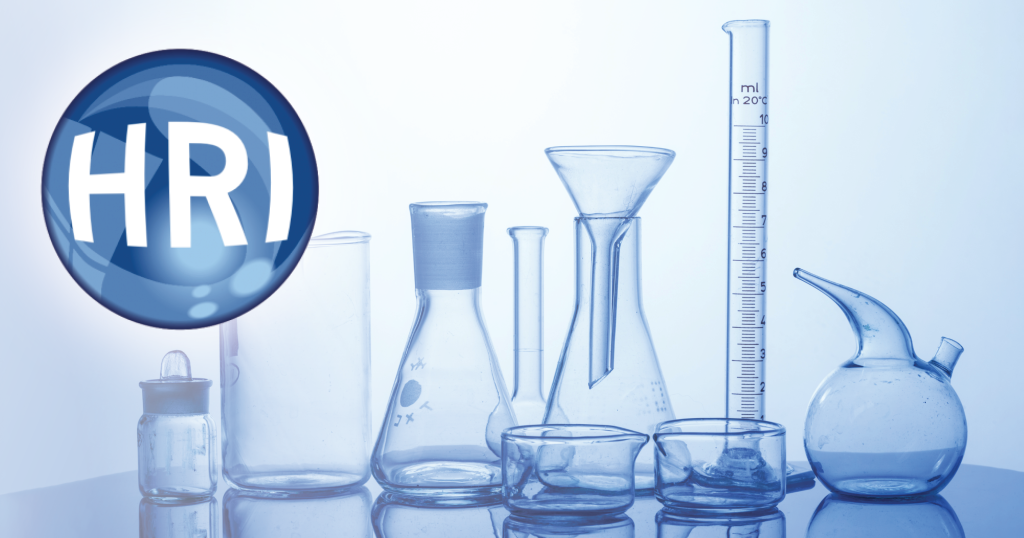5th International Homeopathic Research Conference

By Mark Land, M.S., RAC, AAHP President
The Homeopathic Research Institute (HRI) held its 5th international research conference on homeopathy in London, June 15–18, 2023. The conference theme was “cutting edge research in homeopathy.” Sixty-one researchers from 15 countries made 35 oral and 33 poster presentations in clinical, fundamental, pathogenic, and veterinary research. More than 210 delegates from 27 countries attended the conference. AAHP was a sponsor of the conference and AAHP Secretary Eric Foxman and I attended on behalf of the association.
As a first-time attendee at the conference, I was struck by several things, including how researchers have incorporated clever and inventive ways to investigate the actions and effects of homeopathic preparations. In basic in vitro work, researchers investigated the effects of homeopathic preparations on many models, including cell wall organization and its effects to inhibit melanoma cell migration. It wasn’t long ago that one was terrified to think of demonstrating direct effects of a homeopathic preparation. Now the use of in vitro models in homeopathy is commonplace and ever expanding. Single cell systems are intriguing because they easily demonstrate effects unencumbered by complexity. Because of their simplicity, the results are directional and inform research methods in higher systems.
Remarkably, several projects were presented in aquaculture. In short, these studies show multiple effects of homeopathic preparations in marine plant and animal systems. More complex than single cells yet unaffected by the placebo response, these programs show potential direction in more complexity but yet don’t mimic the clinical setting.
Several studies focused on inhibition of the inflammation cascade in different systems. While these projects are still preclinical, results of this type can clearly inform research designs and data collection in higher organisms including humans. This is clear in some of the clinical studies presented in which biomarker results were obtained from participants to confirm biochemically the clinical observations of the study team.
The use of biomarkers and innovative study models has become the norm in homeopathic research, both preclinically and clinically. The overwhelming theme of researchers in these areas was not, “can we do meaningful preclinical research in homeopathy,” but “how can we do it better.”
Notably among the keynote presentations were a few retrospectives from a generation of homeopathic researchers. Below are a few highlights.
Key Results from 25 Years of Basic Research into Homeopathic Potentization
Presented by Professor Stephan Baumgartner, Institute of Integrative Medicine, University of Witten/Herdecke, Witten, Germany
For 25 years we worked on 18 different laboratory models. In 15 out of 18 assays, we observed statistically significant empirical evidence for specific effects of homeopathic preparations greater than placebo. Three of these assays were investigated using more than 14 independent experiments that were performed by two independent researchers in multiple locations. We conclude that we observed solid, statistically significant empirical evidence in favor of the existence of specific effects of homeopathic preparations in potency levels where direct material effects of the potentized material would not be expected.
Thirty Years of Homeopathic Clinical Research: Lessons Learned
Presented by Dr. Jennifer Jacobs, Department of Epidemiology, University of Washington, Seattle, Washington
Conducting a double-blind randomized controlled trial is difficult. Doing so within the paradigm of classical homeopathy is even more challenging. Homeopathic research is held to a higher standard than conventional trials. Any flaws in study design, implementation, and analysis can be used by critics to negate the results.
Ten Years of Research on Solvatochromic Dyes and Homeopathic Potencies: A Summary of Findings So Far, Together with Recent Results
Presented by Dr. Steven Cartwright, Cherwell Laboratory for Fundamental Research in Homeopathy, Oxford, United Kingdom
The use of solvatochromic dye to investigate homeopathic potencies has provided, and continues to provide, a wealth of information about the fundamental nature of potencies. Almost 60 dyes have been examined during the past 10 years under a range of conditions. Each has provided different and complementary information, thereby allowing a substantial body of physicochemical evidence to be amassed. It is now possible to look at the trajectory of potency propagation, action, and decay, and from this draw conclusions on how potencies may be exerting their effect.
As mentioned above, the advances in test methods and the results presented are remarkable and represent a bright future for research in homeopathy. Notably, however, North America is poorly represented within the homeopathic research community. With a sales volume nearly the same as that of Europe, North America lags in supporting the future of our industry through research. One explanation I heard was that no research institutes engaged in homeopathy exist in North America. That may be true, and it deserves to be fixed.
HRI is a U.K.-based charity dedicated to promoting high-quality research in homeopathy at the international level. HRI is dedicated to the evaluation of homeopathy using the most rigorous scientific methods available and communicating the results of such work beyond academic circles. They operate on donations. One way for Americans to contribute to the research process is to donate to HRI. Research in homeopathy has improved no doubt due to the work of HRI. Visit their website at HRI-Research.org and learn more about this conference and research on homeopathy in general.
Consider donating and mark your calendar for a research presentation by HRI’s Chief Executive Rachel Roberts on Thursday, Sept. 21, 2023. This virtual presentation will be hosted by AAHP. More to come soon.
